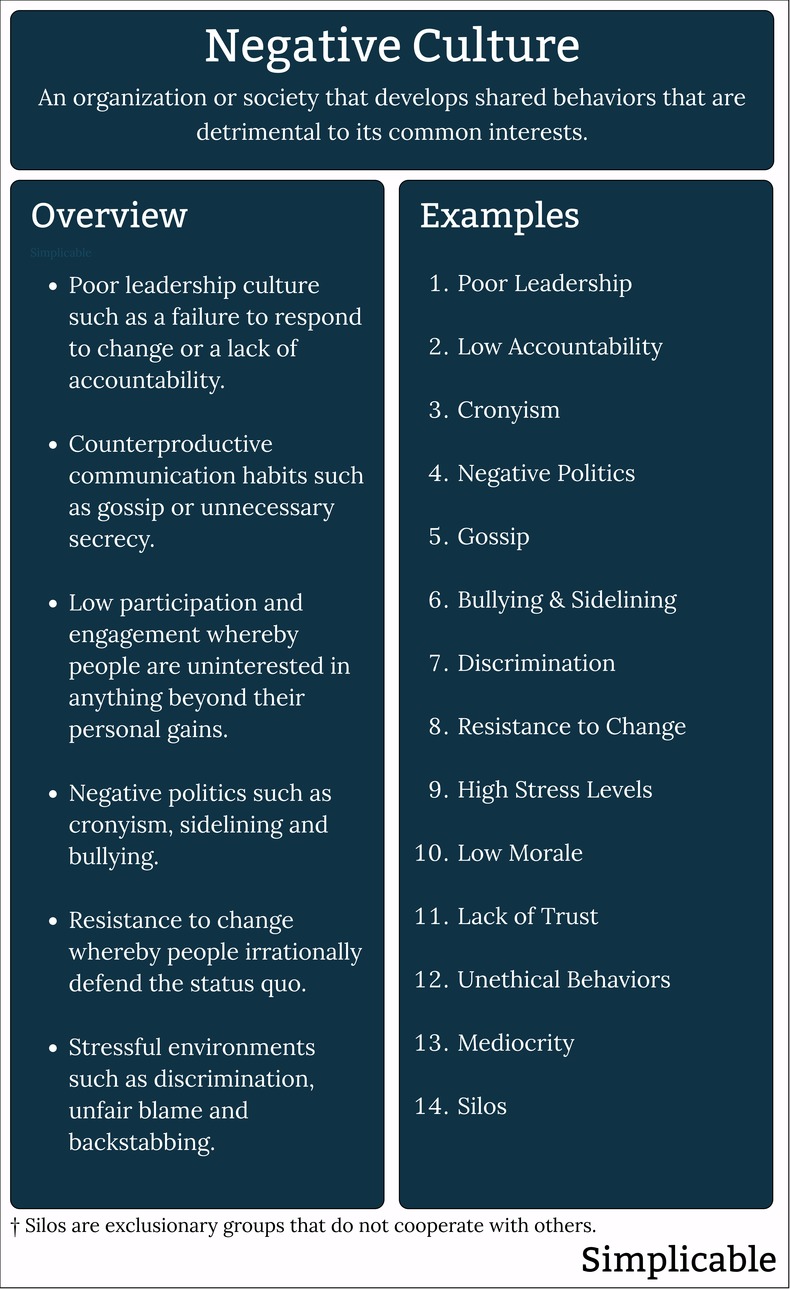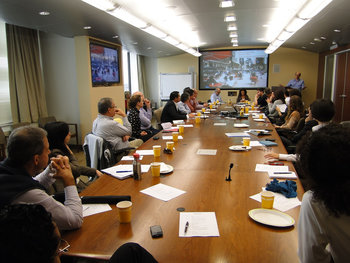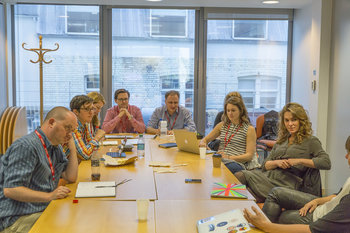Leadership
The norms and habits of the leadership of an organization.Conflict of interest | Cronyism |
Disregard for stakeholders | Fail to clear issues |
Failure of imagination | Failure to lead change |
General incompetence | Inconsistent |
Inflated sense of entitlement | Lack of accountability |
Lack transparency | Mediocrity |
Mushroom management | Narcissistic leadership |
Neglect of due diligence | Neglect of fiduciary duty |
Neglect of risk | No values |
Out of touch with operational realities | Perverse incentives |
Sacrifice future for quarterly results | Say one thing but do another |
Set a bad example | Unimaginatively copy the competition |
Communication
A counterproductive culture of communication such as a habit of over-communicating propaganda-like messages or large volumes of information such that employees simply stop listening.Avoidance of necessary conversations | Discussing confidential matters in front of customers |
Failure to listen | Failure to manage expectations |
Failure to set expectations | Inefficient meetings |
Information silos | Messages perceived as disingenuous propaganda |
Miscommunication | Misinformation |
Overcommunication | Overuse of jargon |
Rumors | Unnecessary secrecy |
Motivation & Engagement
Expectations and conditions that cause low productivity. For example, norms that allow knowledge workers to avoid committing to projects and action items such that they do little work.Defeatism | Disengaged employees |
Failure to deliver to commitments | Gaming the system |
Hands-off culture | Lack of shared experiences |
Lack of trust | Low attention to detail |
Low confidence in management | Low confidence in strategy |
Low productivity | Malicious compliance |
Poor attendance | Resistance to change |
Office Politics
Office politics is the defacto process by which firms make decisions, allocate power and get things done. This is a social process that can turn negative and counterproductive in countless ways.Abilene paradox | Bozo explosion |
Failing upwards | Low cooperation |
Passive-aggressive behavior | Petty authority |
Prioritization of group harmony over rational action | Promotions not based on merit |
Schadenfreude | Setting up to fail |
Sidelining | Workplace bullying |
Working Conditions
Elements of culture that impact the health, safety and quality of life of employees. For example, a work culture where nobody goes home before their boss such that they may work long hours despite a lack of work.Blaming low level employees for failures not within their full control | Expectation of long hours |
High stress environment | Inappropriately high workload |
Poor safety culture | Pressure not to take time off for any reason |
Customer Experience
Elements of your culture that impact the customer. For example, a culture where designers don't use their own products and have never met a customer such that products are disconnected from customer needs.Biases directed towards customers | Corporate narcissism |
Culture of disrespect for the customer | Culture of misleading customers |
Hostility towards customers | Lack of professionalism |
Naive design | Poor service culture |
Summary
Negative culture are entrenched shared behaviors that are detrimental to the common interests of a group.


































